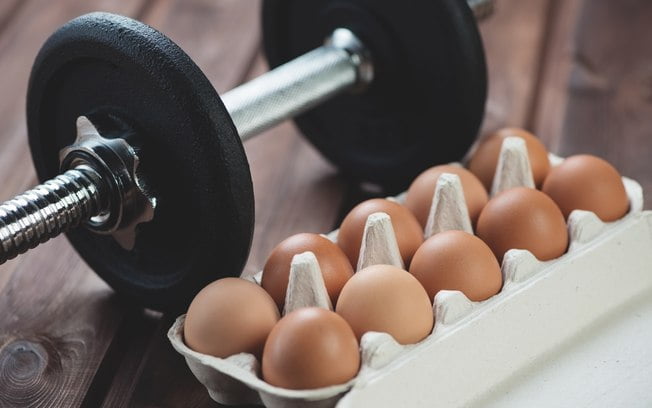If gaining muscle mass is your goal, here are some tips that can put you ahead of the competition
From heavy exercise to the most elaborate diets possible, to vitamin and protein supplements, there is no shortage of resources today to maximize/accelerate muscle mass gain.
But other factors, even more, important than taking or not taking a supplement to aid in the process of gaining muscle mass, can compromise or help your performance at the gym (or physical activity of your choice), and they go from eating to eating, daily routine.
According to Cau Saad, a physical educator, to make the most of the opportunity to gain muscle, one has to choose the right activity. It is crucial, as the teacher points out, “to choose an activity that you enjoy doing so, the chance of missing decreases.” Before that, however, you need to do a general checkup and find qualified professionals to select and periodize your training.
This is important because it is this professional who will give you not only the frequency of training in the week but also the appropriate intensity and volume of them per day, not to overload your health.
Diet and muscle mass

Apart from training, it is very important to pay attention to food. Whether for weight gain or weight loss, a proper diet is the key. For Cau, eating six times a day – as some diets suggest – is not absurd.
“The most important is the quality of food,” recalls the educator. In addition, the amount of food in meals can also spoil the plans. Basically, your diet should be rich in nutrients to keep your body well-fed and healthy – and at these times, regular water intake is also important.
Also in this part, diets for those who want to gain muscle tend to focus on two main nutrient groups: carbohydrates and proteins. The former is important for the production of glucose, which serves as fuel for cells.
One little-mentioned food that is a great source of carbohydrates is cooked cassava, which is “rich in complex carbohydrates and does not spike insulin in the blood because it has a low glycemic index of 46”.
The advantage of this root is that its two carbohydrates (amylopectin and amylose) release glucose more slowly into the body. This is why cassava helps to prolong the presence of this sugar in the body, giving energy for everyday life. In addition, this delicacy also aids in digestion.
As for protein, much is said about chicken as a great source of this nutrient – so much so that dishes prepared with this bird and sweet potato have reached meme status. But some fish appear as equally rich – and lighter options. One of them is tilapia.
Cau explains that proteins play a key role in tissue formation. They can be broken and rearranged to rebuild any type of tissue that needs to be rebuilt – the prime example being injured muscle fibers after training.
Then comes the tilapia, which has, in a 115g filet, a total of 23g protein, only 2g fat and 111 calories. “It is a type of fish that can not miss the diet of those who practice bodybuilding .”
Rest to “grow up”

Now that your diet and training routine can now be created more clearly, it is important to turn to something that lies between two things: rest. As for sleep, the educator notes that it is not possible to set a minimum amount of hours to sleep, because “there are those who sleep 5 hours well and deep, but there are those who sleep 8 hours poorly, with interruptions, etc.”.
If your concern is not there, but the proper rest to give your body between workouts, you may have heard of the “days off” to allow the muscles to fully recover.
Cau, however, says this practice is not necessarily suitable for everyone. “There are indeed studies that support this practice of rest or detraining, but it is all about the stimulus you give the muscle,” he said.
According to her, several factors interfere in deciding whether or not this is appropriate for your routine, and they range from your motor coordination and muscle balance to body composition and postural correction.
Other important things to consider at the time of “detraining” are the choice and intensity of the exercises as well as their periodization. Again, it is a decision that must be made with your personal trainer or physical educator.
It’s almost time to shine

Your whole routine has been set, but preparations are not over yet. Before you exercise and gain the much desired extra muscle, you need to awaken your muscles somehow, and this is a step that many people overlook.
This is in two steps before you start your workout, with warm-up and stretching. For Cau, the first practice will maximize gains, while the lack of the second will result in shortening of the musculature – which consequently will not work to the full extent.
So, no matter how much your gym mates find themselves wasting their time, or say you don’t have to do this for bodybuilding, it’s worth spending a few more minutes preparing your body.
After finishing the training, the muscles also shorten there are professionals who advocate the need for a stretch before returning home. Again, ask questions to your teacher or personal.
Now yes, all the tools to gain muscle are in your hands. Remember, the results are not immediate. Each person has their time to present the gains because of differences in metabolism and routine.
“The results appear around 12 continuous sessions (with due intervals). To maintain, it takes periodicity,” recalls Cau Saad. So patience. If your personal has prepared a workout with 2 weekly sessions, the journey will be long – but soon your muscle mass gain will appear.

